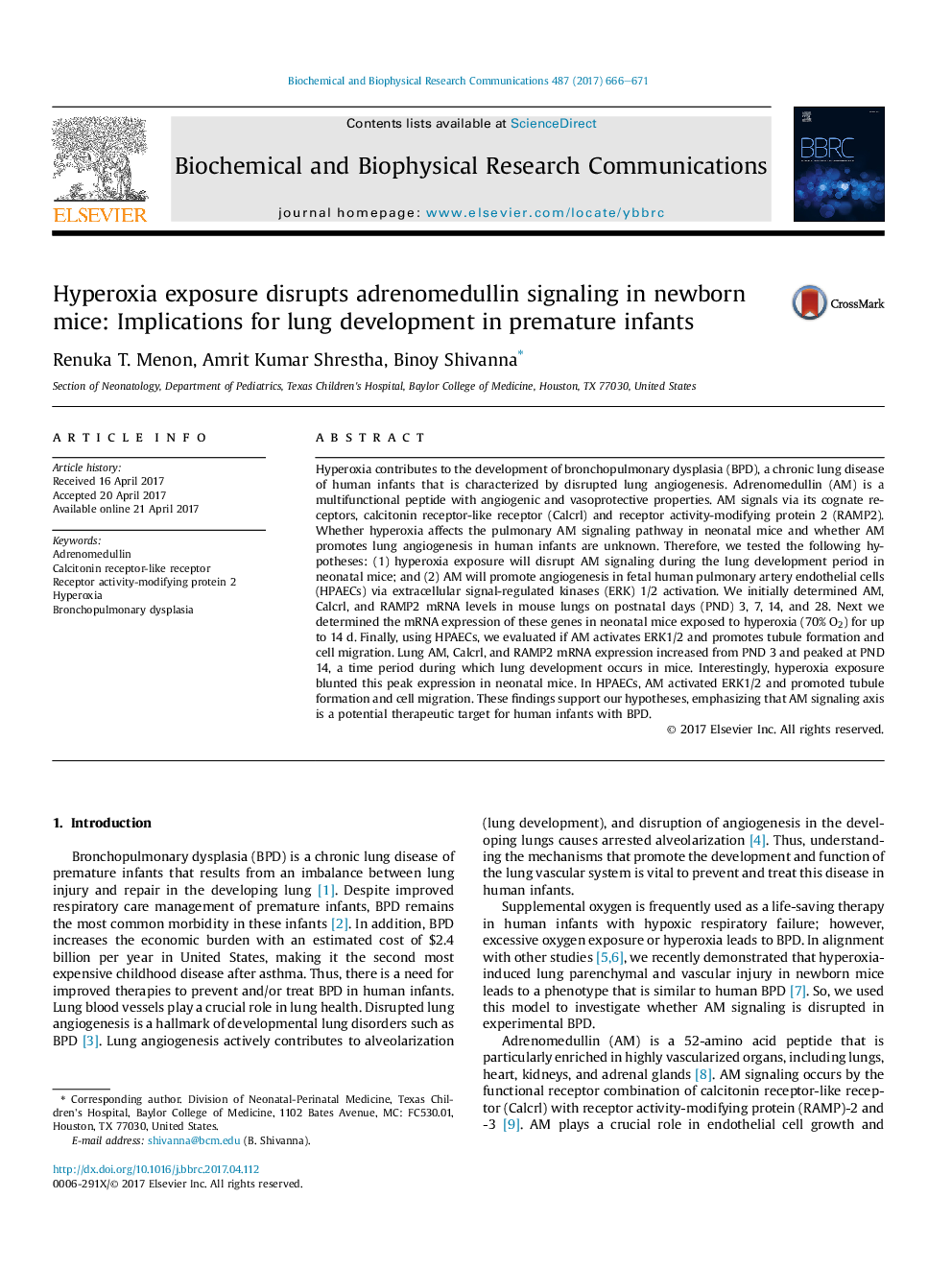| کد مقاله | کد نشریه | سال انتشار | مقاله انگلیسی | نسخه تمام متن |
|---|---|---|---|---|
| 5505861 | 1400280 | 2017 | 6 صفحه PDF | دانلود رایگان |
عنوان انگلیسی مقاله ISI
Hyperoxia exposure disrupts adrenomedullin signaling in newborn mice: Implications for lung development in premature infants
ترجمه فارسی عنوان
قرار گرفتن در معرض هیپوکسیا باعث اختلال در ارسال سیگنال آدرنومودولین در موش های تازه متولد شده می شود: پیامدهای رشد ریه در نوزادان نارس
دانلود مقاله + سفارش ترجمه
دانلود مقاله ISI انگلیسی
رایگان برای ایرانیان
کلمات کلیدی
موضوعات مرتبط
علوم زیستی و بیوفناوری
بیوشیمی، ژنتیک و زیست شناسی مولکولی
زیست شیمی
چکیده انگلیسی
Hyperoxia contributes to the development of bronchopulmonary dysplasia (BPD), a chronic lung disease of human infants that is characterized by disrupted lung angiogenesis. Adrenomedullin (AM) is a multifunctional peptide with angiogenic and vasoprotective properties. AM signals via its cognate receptors, calcitonin receptor-like receptor (Calcrl) and receptor activity-modifying protein 2 (RAMP2). Whether hyperoxia affects the pulmonary AM signaling pathway in neonatal mice and whether AM promotes lung angiogenesis in human infants are unknown. Therefore, we tested the following hypotheses: (1) hyperoxia exposure will disrupt AM signaling during the lung development period in neonatal mice; and (2) AM will promote angiogenesis in fetal human pulmonary artery endothelial cells (HPAECs) via extracellular signal-regulated kinases (ERK) 1/2 activation. We initially determined AM, Calcrl, and RAMP2 mRNA levels in mouse lungs on postnatal days (PND) 3, 7, 14, and 28. Next we determined the mRNA expression of these genes in neonatal mice exposed to hyperoxia (70% O2) for up to 14Â d. Finally, using HPAECs, we evaluated if AM activates ERK1/2 and promotes tubule formation and cell migration. Lung AM, Calcrl, and RAMP2 mRNA expression increased from PND 3 and peaked at PND 14, a time period during which lung development occurs in mice. Interestingly, hyperoxia exposure blunted this peak expression in neonatal mice. In HPAECs, AM activated ERK1/2 and promoted tubule formation and cell migration. These findings support our hypotheses, emphasizing that AM signaling axis is a potential therapeutic target for human infants with BPD.
ناشر
Database: Elsevier - ScienceDirect (ساینس دایرکت)
Journal: Biochemical and Biophysical Research Communications - Volume 487, Issue 3, 3 June 2017, Pages 666-671
Journal: Biochemical and Biophysical Research Communications - Volume 487, Issue 3, 3 June 2017, Pages 666-671
نویسندگان
Renuka T. Menon, Amrit Kumar Shrestha, Binoy Shivanna,
